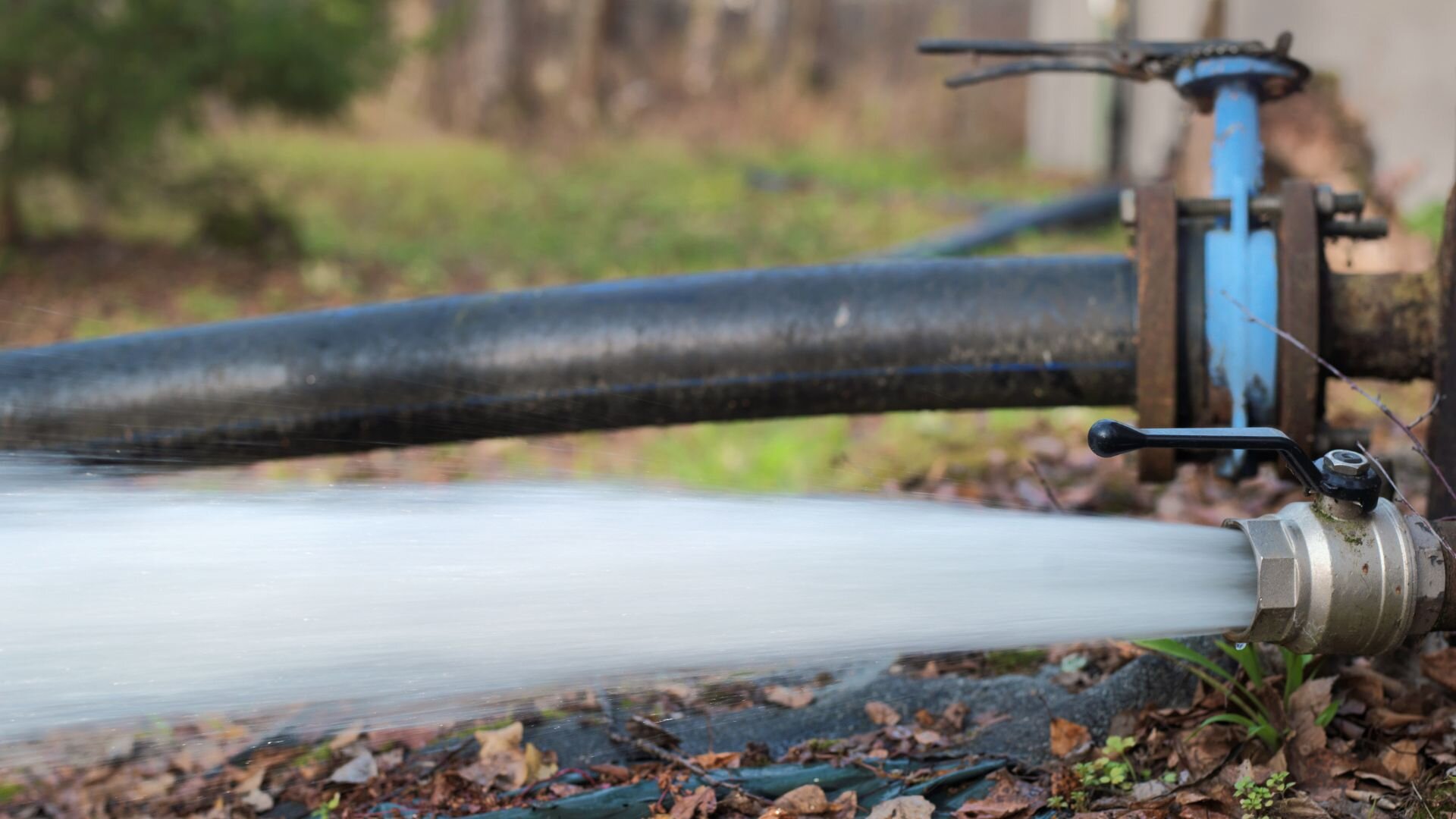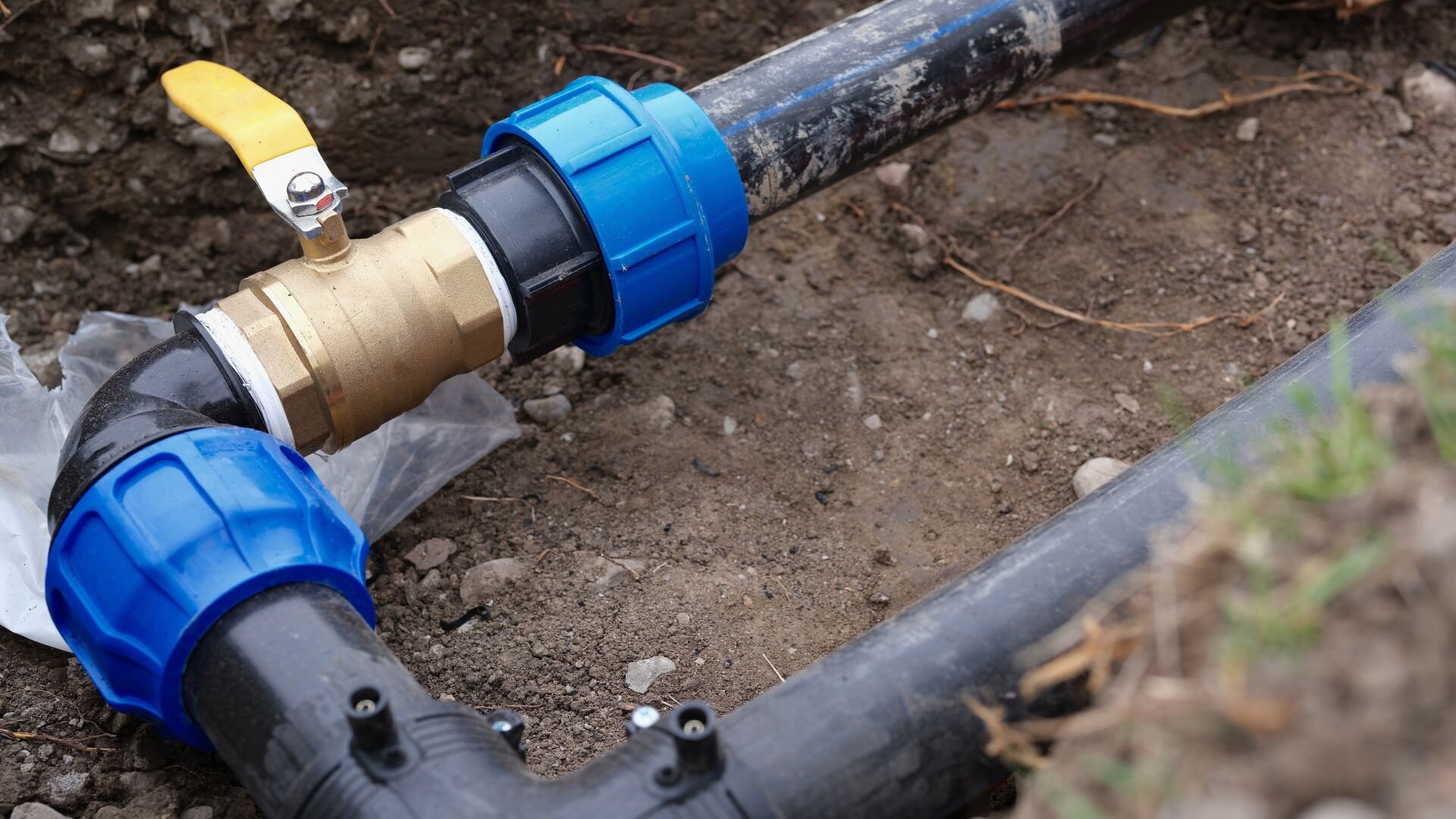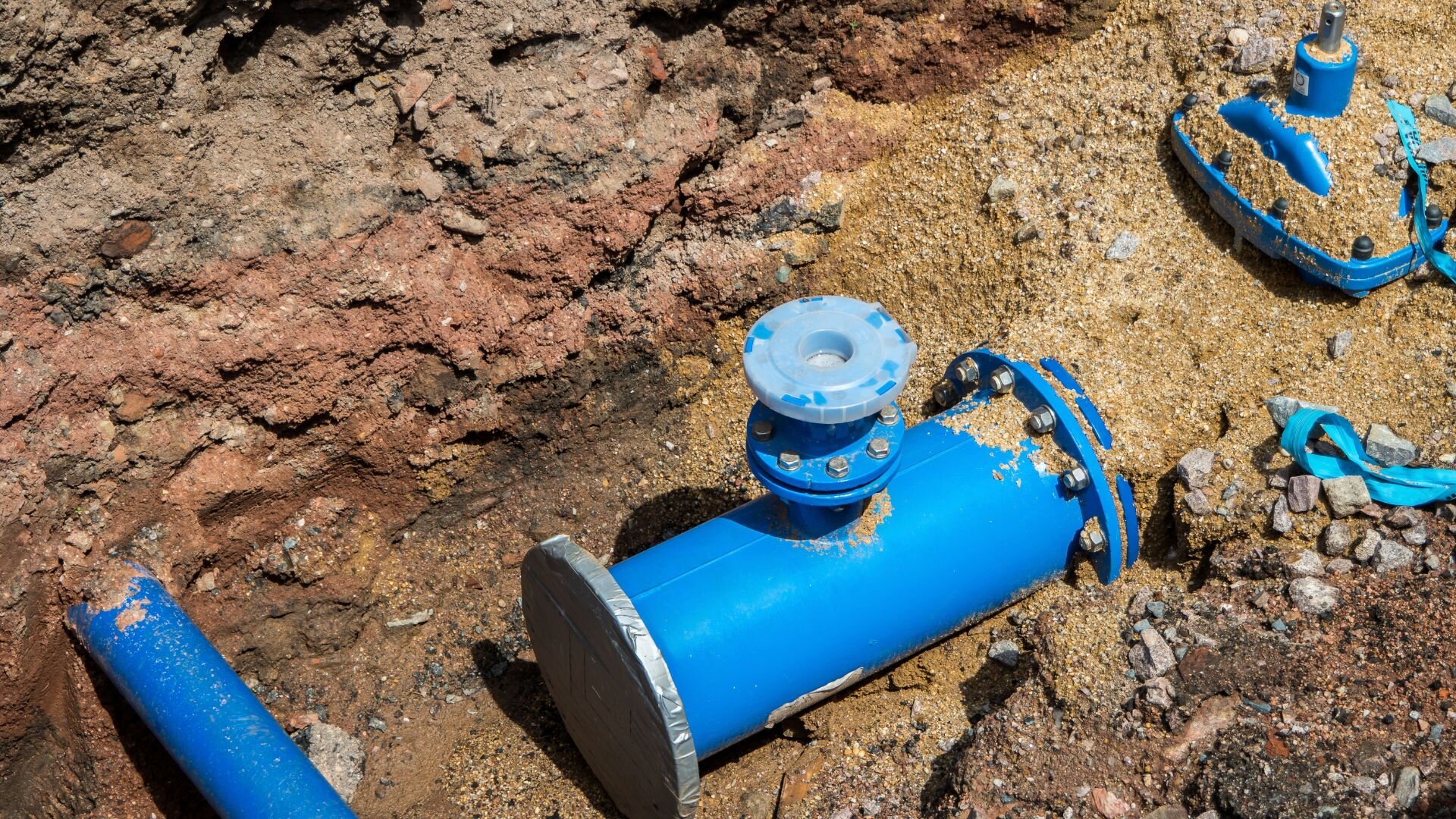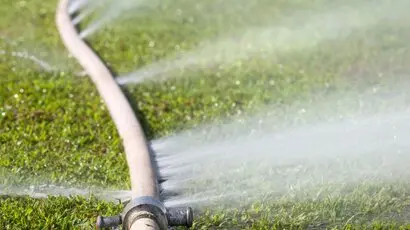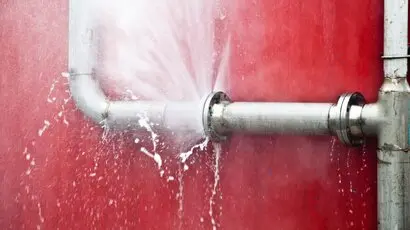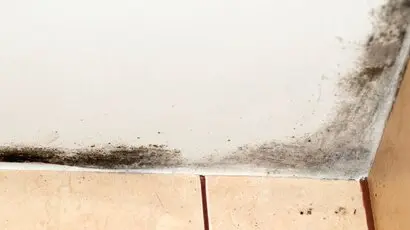Ever imagine a peaceful evening interrupted by the gushing sound of a burst pipe? Knowing how to shut off your water supply during such a plumbing emergency is your first line of defence against a flood of problems.
Burst pipes, caused by anything from freezing temperatures to blocked drains, can unleash chaos. Water damage can affect everything from electrical appliances to your home’s foundation, even posing electrical hazards.
Spotting a Burst Pipe Before It Bursts Your Budget
A burst pipe isn’t just inconvenient—it’s a costly nightmare. But how can you tell if a pipe’s burst before the flooding starts? Thankfully, your plumbing often sends out warning signals.
![]()
Signs of a Burst Pipe: Listen Up and Look Around
Unusual water pressure is a red flag. It could be a sign of a blocked pipe or, worse, a burst pipe somewhere in the line. Listen for any unusual noises coming from your pipes, like hissing or gurgling. These sounds could indicate water escaping from a broken pipe.
Visible leaks are the most obvious clue. Check for water stains on walls, ceilings, or around plumbing fixtures. Unexplained puddles of water, especially near the hot water system or in your basement or crawl space, could be signs of a burst water pipe.
Winter Woes: How Freezing Temperatures Cause Pipe Bursts
Freezing temperatures are a major culprit behind pipe bursts. Water expands as it freezes, putting immense pressure on pipes, which can eventually burst. To prevent burst pipes, insulate pipes in exposed areas like exterior walls, attics, and crawl spaces. Regularly inspecting your pipes for signs of wear and tear, like corrosion, is also key.
Taking Action: What to Do When a Pipe Bursts
If you think a pipe has burst, don’t wait around! First, switch off the main water supply using the isolation valve, typically found near the meter. Then, open the lowest cold water taps to drain the remaining water. It’s important to ring up a licensed plumber for lasting repairs.
A reputable plumbercan assess the damage, locate the burst water pipe, and make the necessary repairs. Ignoring a burst pipe can lead to extensive water damage, mould growth, and even electrical hazards.
Preventing the Problem: Keep Your Pipes Healthy
Preventative measures are crucial. Schedule regular maintenance checks with a reputable plumber to identify potential problems like blocked pipes or corroded pipes. Proper pipe installation is also important – poor installation can increase the risk of pipe bursts. By taking these steps, you can avoid the stress and expense of a burst pipe and keep your home safe from water damage.
Locating the Main Water Shut-Off Valve
It’s crucial to know where your main water shut-off valve is in case of a plumbing emergency. Burst or blocked pipes can lead to water damage, electrical troubles, and health risks like mould growth.
This valve controls your entire house’s water flow. It’s usually near the water meter, often found under a council cover plate at the front of your house. In colder climates, it might be inside near the garage, basement, or crawl space. Look for a red or green-handled tap, a wheel-gate valve, or a single-handled ball valve.
Knowing its location can save you time and money during a plumbing crisis. A burst pipe can waste litres of water per minute, damaging walls, floors, and belongings. Even a small leak left unattended can lead to major repairs.
![]()
Shutting off the water at the main valve can stop the flow and minimise damage. This allows you to call a licensed plumber to fix the issue, whether it’s excessive water pressure, blocked pipes, or faulty installation.
Bear in mind, temporary fixes, like tightening a tap, are only stopgaps. A plumber can assess and repair the issue correctly to prevent more bursts. Keeping an eye out for water stains, particularly near hot water taps, helps catch problems early on.
Locate your main water shut-off valve today. It will give you peace of mind and allow you to act quickly in case of a plumbing emergency. Controlling your water flow can avoid water damage and ensure your plumbing system runs smoothly.
Step-by-Step Guide to Turning Off the Water Supply
Step 1: Safety Precautions
Before attempting to turn off the water supply, take the following safety precautions:
Step 2: Gather Necessary Tools
To turn off the water supply, you may need the following tools:
- Adjustable wrench
- Pliers
- Flashlight
Step 3: Locate the Main Water Shut-Off Valve
The main water shut-off valve is typically located near the water meter, which is usually found outside your home near the street. In some cases, the valve may be located inside the house, near the hot water service, or at the main water line entering the building. If you’re unsure of the valve’s location, consult your property’s plumbing plan or contact a professional plumber.
Step 4: Turn Off the Main Water Shut-Off Valve
Using an adjustable wrench or pliers, turn the valve clockwise until it stops. This will cut off the water supply to your entire house.
If the valve is difficult to turn, do not force it, as this may cause further damage. Contact an emergency plumber for assistance.
Step 5: Check the Water Supply
After turning off the main water shut-off valve, check to ensure the water supply is successfully turned off:
- Turn on a tap inside your home. If water still flows, the main valve may not be fully closed, or there may be a problem with the valve itself.
- If you have a burst water pipe, check the affected area for any remaining water flow. If water continues to leak, there may be an issue with the pipe insulation or a bad installation.
- Contact a plumbing service for assistance in repairing the damaged pipe and addressing any other plumbing concerns.
Step 6: Drain Remaining Water
- Open all cold water taps in your home to drain any leftover water from the pipes. This will help prevent further damage from leaking water or frozen pipes.
- Flush all toilets to drain the water from the cisterns.
- If you have a hot water system, turn off the electrical power or gas supply to the unit and drain the hot water taps as well.
Step 7: Deal with Water Damage
If a burst pipe or water leak has caused extensive damage to your property, take the following steps:
- Contact your insurance company to report the damage and discuss your coverage.
- Call a water damage restoration company to assess the damage and begin the clean-up process.
- Do not attempt to repair the damaged pipe yourself; always hire a professional plumber to ensure the repair is done correctly.
Step 8: Prevent Future Plumbing Problems
To prevent future plumbing issues, consider the following:
- Regularly inspect your plumbing system for signs of wear, tear, or leaks.
- Insulate water pipes to prevent freezing during cold weather.
- Avoid planting trees with invasive roots near your water line, as tree roots can cause pipes to burst.
- Monitor your water consumption and investigate any sudden increases, as this may indicate a hidden water leak.
Dealing with Partially Closed Valves or Stuck Valves
When dealing with partially closed or stuck valves, it’s crucial to identify the issue promptly to prevent potential problems like burst pipes or water leaks. A partially closed valve can reduce water pressure and flow, while a stuck valve may prevent water from reaching certain areas of your property. If you suspect a valve issue, check the water meter and observe any changes in water flows.
![]()
To loosen a stuck valve, apply penetrating oil around the valve stem and gently tap it with a hammer. This technique can help break up any corrosion or mineral buildup that may be causing the valve to stick. However, be cautious not to apply excessive force, as this could lead to broken pipes or further damage.
If the valve is still stuck or water’s leaking, it’s wise to get a professional plumber to help. Forcing it could burst a pipe, causing significant water damage and expensive repairs.
Regular maintenance is key to preventing valve issues and minimising the risk of burst water pipes. Engage plumbing services to periodically inspect your valves, pipes, and overall plumbing system. They can identify potential problems, such as a small burst pipe, and perform necessary plumbing repairs before the situation escalates into bursting pipes or significant water pipe bursts.
By addressing partially closed or stuck valves promptly and seeking professional help when needed, you can maintain optimal water pressure, prevent frozen water in your pipes during colder months, and avoid the inconvenience and expense of dealing with burst pipes and extensive water damage.
Next Steps After Turning Off the Water Supply
Once you’ve turned off the water due to burst pipes, getting a professional plumber in for repairs is essential. Burst pipes can cause significant damage, so make sure to document everything for insurance. To avoid future issues, insulating your pipes and scheduling regular maintenance is key.
Burst water can lead to costly repairs, so taking preventive measures is key. A plumber can assess the extent of the damage caused by the burst water pipes and recommend the best course of action.
Remember, dealing with burst pipes promptly can minimise water damage and save you money in the long run.
Don’t Let a Burst Pipe Dampen Your Day
When a pipe bursts, quick action is crucial to minimise water damage. Knowing how to turn off your main water supply can save you from extensive property damage and costly repairs. Locate your main water shut-off valve today and familiarise yourself with its operation.
If you’re faced with a burst pipe emergency, trust the experts at WP Plumbing. Our experienced team swiftly handles burst pipes and provides thorough water damage restoration. Don’t let a plumbing disaster dampen your day – contact WP Plumbing for immediate assistance!

